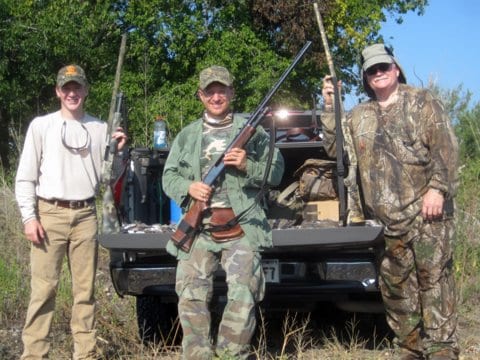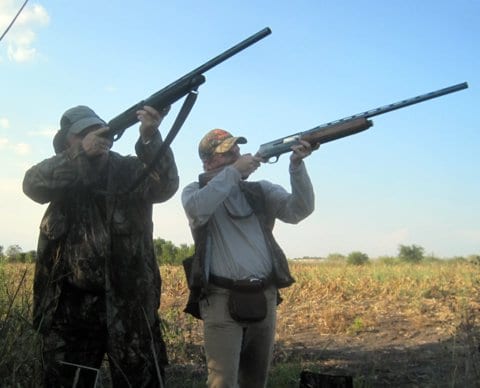 Editor’s Note: This was sent to us by reader Donald J. Cohn from Bellaire.
Editor’s Note: This was sent to us by reader Donald J. Cohn from Bellaire.
My oldest child, Jack, ever since he was little, enjoyed the outdoors whether it was fishing, hunting, scouting with the Boy Scouts, enjoying public lands or having fun exploring on our family ranches.
Well, that little boy recently turned 17 and completed his hunter safety course, which I think is very beneficial training in addition to what we parents teach. My father, and mentor, (a Texas rancher, former lawman and Vietnam Vet) treated Jack and me to this year’s opening weekend of dove hunting on a friend’s property between Austin and San Marcos.
We had an awesome time. We put out “Mo” and “Jo” decoys, watched the sun rise and later fall, watched numerous birds fly overhead (hearing the “whistling” sound as they zoomed by), drank coffee in the a.m. and Gatorade/water in the afternoon, took some great shots and then some not so great shots (some dove have Kevlar we are certain), told stories and just enjoyed each others company — making memories.
We were blessed with a good and safe hunt. But “killing” is not the point of it all, which many non-hunters fail to understand. It’s about the camaraderie, it’s about learning life lessons:
1. Most importantly life and death — death is a part of life and for us to live, something (plant or animal) must give up its life. I’m a BSA rifle and archery instructor and during an instructional, one mom afterward said she was ok with target practicing for her son but against hunting because she was a vegetarian and against killing animals to which I replied, “Where do you think that ‘fu fu’ designer leather backpack and those leather shoes came from?”
2. Preparation — we made a trip to the trap and skeet range to again review the equipment (shotguns) we would use and demonstrate proper safe use, and kick the “rust off” our wing shooting.
3. Deadlines — getting to the field on time to set up things and gear.
4. Following the rules and laws — having right gear, license, shooting the right game and limits.
5. Clean up — retrieving gear and picking up all trash and spent shells as best as possible and not to leave the fields “trashed” (in scouting we call it “Leave No Trace”).
6. Harvesting — learning how to clean the birds getting the most recoverable meat, and
7. Not wasting — eating the game you kill as I always tell my kids, “If you want to hunt and shoot something then you must also eat it,” so that the animal is not wasted.
I’ll never forget the first time my daughter (14 now) went squirrel hunting with me some years back. My wife’s family is part Cajun and squirrel hunting, heck any hunting, is huge in her family. She helped clean them, learned what the heart, lungs, stomach, etc … were (she wants to be a veterinarian), and when we cooked them and a few ducks, she ate “her squirrel.” I asked her how she liked it and she replied, “This is the best squirrel I’ve ever had” and the entire family busted up laughing — it was her first squirrel meal ever! I then asked what it taste like and she replied “chicken,” and again laughter erupted at the table. Oh, and the squirrel was delicious, so tender, and even better than the ducks we had cooked, I must say.
8. And, not to forget, family time and storytelling. In a time of texting their buddy sitting right next to them on the couch, getting to the outdoors away from the boob tube, computers, video games (but we don’t allow them in our house, to my four kids distain — they’ll thank me later), and the phones allows us to visit face-to-face, develop conversational skills, tell family stories and a few tall tales of past hunting/fishing adventures.


